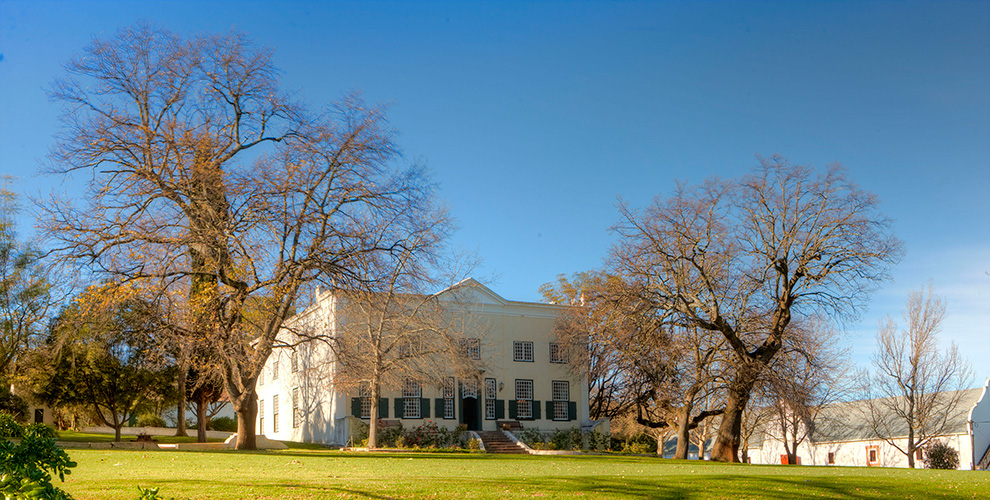We are frequently so focused on what’s hot and what’s new, that we’re forgetting the foundation that made our society what it is today – our heritage. We often don’t realise that the Cape’s cultural landscape has been enriched by influences accumulated from four continents (Africa, Asia, Europe and North America). As such, to celebrate heritage month, I’m paying homage to South Africa’s rich heritage by just quoting ten wines.
1. Solms-Delta, the home of two types of settlers
Before the first colonists, Hans Silverbach and his freed slave wife Ansela van de Caab, called Solms-Delta (in the Franschhoek Valley) their home in around 1690. The land was inhabited some thousand years before (if not more) by humans from the Stone Age, hunters, gatherers and KhoiSan. Solms-Delta, proud of their double heritage, have dedicated a museum – the Museum van de Caab – to recognise the people who lived on the farm (especially the too often forgotten slaves) to share their unique story. Each wine reflects this rich heritage.
2. La Motte, French heritage
Franschhoek, the “French corner”, became the new home of a wave of French Huguenots from about 1688. They fled France after the revocation of the Edict of Nantes in 1685, forbidding them to follow their Protestant religion. Franschhoek is today dotted with French memoirs. Some French settlers like Pierre Joubert named their new allotted farms after their towns of origin. La Motte is named after La Motte d’Aigues in Provence. In addition to their sole history, La Motte also shares another cultural heritage: Jan Hendrik Pierneef – their restaurant and wine range is dedicated to one of South Africa’s greatest master painters.
3. Steenberg, Catharina, first female landowner
Granted in 1682 to the feisty, ambitious widow Catharina Ustings Ras, Steenberg (close to the Constantia Valley) is recognised as one of the oldest estates. The legend holds that this strong, independent woman was Simon van der Stel’s mistress which is why he would have granted her the land. Today this wine estate’s restaurant is dedicated to one of the first female landowners in South Africa.
4. Muratie, a unique love story between a free burgher and a slave
Muratie is a testimony and reminiscent to the cultural composition of over 300 years ago. The colourful Cape wouldn’t be what it is today without the strong cultural influence infused by the Cape slaves, from Africa and Asia. Some (like Ansela van de Caab, born in the Cape as her name suggests) were lucky to have been freed, Ansela by her devoted lover and husband, Laurens Campher – the founder of Muratie and father of their three children. Two wines are dedicated to them.
5. Groot Constantia, the original first wine estate
Ambitious, Governor Simon van der Stel secured a much wanted grant of land, the size of Amsterdam at the time, which he named Constantia. Being a wine lover, he carefully selected the site that suited its grand purpose. But it was only 50 years after his death that the new owner, Hendrik Cloete, fulfilled the governors’ dream. Today Groot Constantia, a provincial heritage site, is a perfect example of the Cape vernacular architecture. The award wines, bearing the iconic manor house, would make Van der Stel proud.
6. Vin de Constance: fit for kings and emperors
It is said that the famous “sweet, luscious and excellent” Constantia wine was “favoured by kings and emperors, preferred by the aristocracy and acquired by generals in the European courts of the 18th and 19th centuries”. Vin de Constance, one of the most highly rated South African wines internationally today (receiving 97 points from wine critic Robert Parker’s Wine Advocate in 2007), is the heir of Constantia wine. Revived in 1986 by Klein Constantia, Vin de Constance is a pure reflection of the historic one, infusing tradition in every bottle.
7. Vergelegen: from wilderness to a highly productive plantation
The visionary governor, Willem Adriaan van der Stel, son of Simon van der Stel, set himself to create an estate that would rival some of the most beautiful estates in Europe. Planting beside vines: orchards, orange groves, oak and camphor trees (300 year-old trees can still be seen today), raising cattle and even attempting silk production. Today the various buildings and gardens still tell the stories of the various owners, and the wines carry the significant octagonal shape, once the wall around the manor house to protect the owners from wild animals.
8. Uitkyk: An architectural masterpiece
The Cape is well-known for its unique vernacular architecture and especially its Cape Dutch gables, each marking an era. Uitkyk, meaning “lookout” in Afrikaans is quite unique as only three are left of these neoclassical flat-roof manors from the 18th century. The wine estate has dedicated the playful, easy-drinking wine range, the Flat roof Manor, to their significant building.
9. Lanzerac, British influence in the Cape
Although the estate was founded in the late 1700s, it acquired its present name when Mrs Elizabeth English née Devenish bought the estate in 1914. Her husband, Frederick Alexander English (a diamond merchant and friend of Cecil John Rhodes) passed away in 1909. So the legend stands that she named the estate after her true love the General Charles Lanzerac, a French marquis, native of Guadeloupe.
10. Waterkloof honours Mother Nature
South Africa’s heritage is also rooted in its soil, millions of years older than any other wine-growing region in the northern hemisphere. The Cape flower kingdom, one of the 6 floral regions in the world, is a top global biodiversity hotspot. Waterkloof Wine Estate, with its fynbos-covered hills, is one of the first estates to farm bio-dynamically. Their wine range, Circle of Life, is a true expression of nature’s gift.
By Christine Lundy

